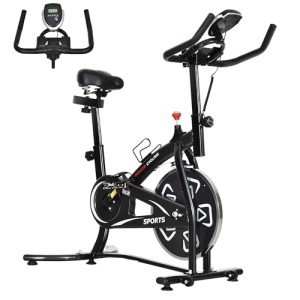Maximizing Your Cycling Experience: A Comprehensive Guide to Indoor Road Bike Trainers
Indoor cycling has actually surged in appeal over the previous years, and for excellent reason. Whether athletes are aiming to maintain their fitness routine during harsh weather condition or beginners seeking to end up being familiarized with riding, an indoor road bike trainer is a flexible and effective solution. This short article looks into the various kinds of indoor bike fitness instructors, their advantages, and considerations for picking the best one.
What is an Indoor Road Bike Trainer?
An indoor road bike trainer is a device that allows bicyclists to ride their own bicycles inside your home, mirroring the experience of outdoor cycling while remaining stationary. It generally includes a frame or base that supports the bike while a resistance mechanism allows users to mimic different cycling conditions, from flat roadways to high slopes.
Types of Indoor Bike Trainers
Direct Drive Trainers
- Overview: These fitness instructors change the bike's rear wheel with a resistance unit. Exercise Bike Shop to the trainer, usually providing a more stable and precise experience.
- Pros: Better power measurement, quieter operation, and enhanced stability.
- Cons: Can be more pricey and may require a cassette.
Wheel-On Trainers
- Overview: These fitness instructors support the bike in a conventional position, utilizing the bike's rear wheel to offer resistance. The trainer holds the bike in location while the rear wheel presses against a resistance system.
- Pros: Generally more budget-friendly and easier to set up.
- Cons: Less accurate power measurement and may present wear on the tire with time.
Smart Trainers
- Overview: Smart fitness instructors can link to cycling software application applications and change resistance in real-time based on the terrain in a virtual environment. They can be either direct drive or wheel-on designs.
- Pros: Enhanced interactivity, adjustable resistance, and performance tracking.
- Cons: Typically more pricey and might require a power source.
Fluid and Magnetic Trainers
- Overview: These fitness instructors utilize either fluid or magnetic resistance systems to develop differing levels of effort needed to pedal.
- Pros: Generally quieter than other types and replicate outdoor cycling well.
- Cons: Less precise than clever trainers and more difficult to adjust for resistance levels.
Advantages of Using an Indoor Bike Trainer
Indoor bike trainers boast a range of benefits that make them an enticing option for cyclists of all levels:
- Weather Independence: Cyclists can train year-round without fretting about rain, snow, or severe temperatures.
- Convenience: An indoor trainer permits flexible training sessions that can quickly fit into busy schedules without requiring to travel to a cycling route.
- Focused Training: Cyclists can focus on particular aspects of their performance, such as speed or endurance, without ecological distractions.
- Improved Safety: Riding indoors gets rid of dangers connected with road traffic, adverse climate condition, and irregular surfaces.
- Multifunctionality: Many trainers are suitable with different cycling apps, enabling riders to engage with virtual trips, structured exercises, and competitors.
How to Choose the Right Indoor Bike Trainer
Picking the ideal indoor bike trainer includes thinking about several aspects. Below are bottom lines to evaluate when deciding:
- Budget: Determine just how much you want to purchase a trainer. Prices can differ widely based on functions and innovation.
- Space Requirements: Assess just how much space you have available for setup. Some fitness instructors need more room than others.
- Type of Cycling: Consider what kind of cycling activities you intend to pursue-- casual trips, structured training, competitive cycling, and so on. This will affect which trainer type is the very best fit.
- Compatibility: Ensure your bike works with the trainer, especially in regard to wheel size and cassette compatibility.
- Noise Level: If noise is an issue, try to find trainers particularly rated for peaceful operation.
Frequently Asked Questions about Indoor Road Bike Trainers
Q1: Can I use any bike with an indoor trainer?
Yes, many indoor trainers work with a wide variety of road and mtb, however it is important to inspect particular compatibility information, especially worrying wheel sizes and rear axle types.
Q2: How do I set up an indoor bike trainer?
Setup differs by trainer type, but usually, it involves protecting your bike to the trainer system, adjusting any resistance settings, and ensuring a steady setup with suitable level ground.
Q3: Are smart fitness instructors better than standard trainers?
Smart fitness instructors provide sophisticated features such as automated resistance modification and connectivity to cycling apps, which can enhance the riding experience. Nevertheless, conventional trainers are frequently more affordable.
Q4: How much space do I need for an indoor bike trainer?
While area requirements differ, a common setup may need an area of roughly 6 feet by 8 feet to accommodate the trainer, bike, and your movement.
Q5: Can I replicate outside cycling conditions on an indoor bike trainer?
Yes, lots of clever trainers and higher-end models can reproduce outdoor conditions, helping to enhance your general training experience.
An indoor bike trainer represents a valuable financial investment for bicyclists aiming to maintain their fitness and improve efficiency regardless of outside conditions. With numerous types available and many advantages to think about, selecting the ideal trainer can supply bicyclists with an interesting and efficient training tool. Whether for competitive training, casual rides, or family fitness, an indoor bike trainer is sure to improve the cycling experience.

